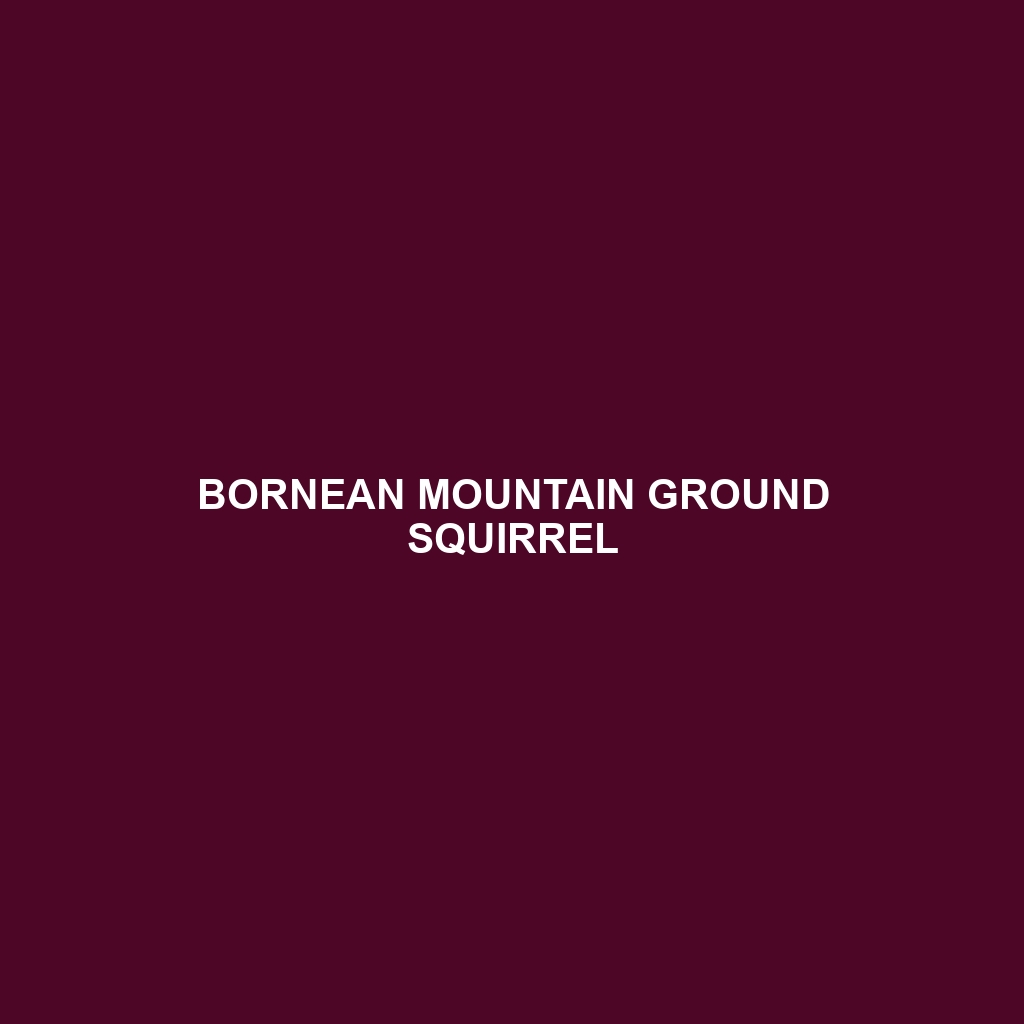Bornean Mountain Ground Squirrel
Common Name: Bornean Mountain Ground Squirrel
Scientific Name: Neosciurus borneensis
Habitat
The Bornean Mountain Ground Squirrel is primarily found in the mountainous regions of Borneo, particularly within the mountainous forests and highland areas. These habitats provide the necessary shelter and food sources for the species, typically at elevations ranging from 1,000 to 3,000 meters above sea level. The ground squirrel thrives in the cool, moist environments of the Bornean rainforest and is often seen in areas with dense underbrush.
Physical Characteristics
The Bornean Mountain Ground Squirrel is a medium-sized rodent with a body length of approximately 20 to 30 centimeters. It features a distinctive fur pattern, which typically exhibits shades of brown and gray, with lighter underparts. One of its notable characteristics is its bushy tail, which is nearly the same length as its body, aiding in balance as it navigates through the trees and undergrowth. The species possesses sharp claws for digging and foraging.
Behavior
This species is known for its diurnal activities, primarily engaging in foraging and social behaviors during daylight hours. Bornean Mountain Ground Squirrels are often seen leaping and climbing through the underbrush and trees, showcasing their agility. They tend to be social animals, living in small groups, and communicate through a variety of vocalizations to coordinate activities and alert each other to potential threats such as predators.
Diet
The diet of the Bornean Mountain Ground Squirrel mainly consists of fruits, seeds, and insects. They have adapted to forage in both the forest floor and amidst the trees, selecting high-energy food sources that support their active lifestyle. During the fruiting season, they play a critical role in seed dispersal, aiding in forest regeneration.
Reproduction
Bornean Mountain Ground Squirrels have a breeding season that coincides with the wet months of the year, primarily from April to August. After a gestation period of about 4 to 6 weeks, females typically give birth to a litter of 2 to 4 offspring. The young are weaned by the age of 6 weeks and begin to forage independently shortly thereafter, although they remain with the mother for social learning and protection during their early life stages.
Conservation Status
The conservation status of the Bornean Mountain Ground Squirrel is currently classified as vulnerable by the International Union for Conservation of Nature (IUCN). Threats to their survival include habitat destruction due to logging and agricultural expansion, which significantly impacts their natural habitat and food sources.
Interesting Facts
– The Bornean Mountain Ground Squirrel is unique in its ability to adapt to both terrestrial and arboreal lifestyles, making it one of the more versatile rodents in its environment.
– Researchers have observed remarkable social behaviors, including grooming and group foraging, highlighting the species’ complex social structures.
Role in Ecosystem
As a seed disperser, the Bornean Mountain Ground Squirrel plays an important role in its ecosystem, assisting in the growth and regeneration of the forest. By consuming a variety of seeds and fruits, they facilitate the propagation of several plant species. Their activity helps maintain the health of the mountainous forest ecosystems, making them a vital component in sustaining biodiversity in Borneo.
